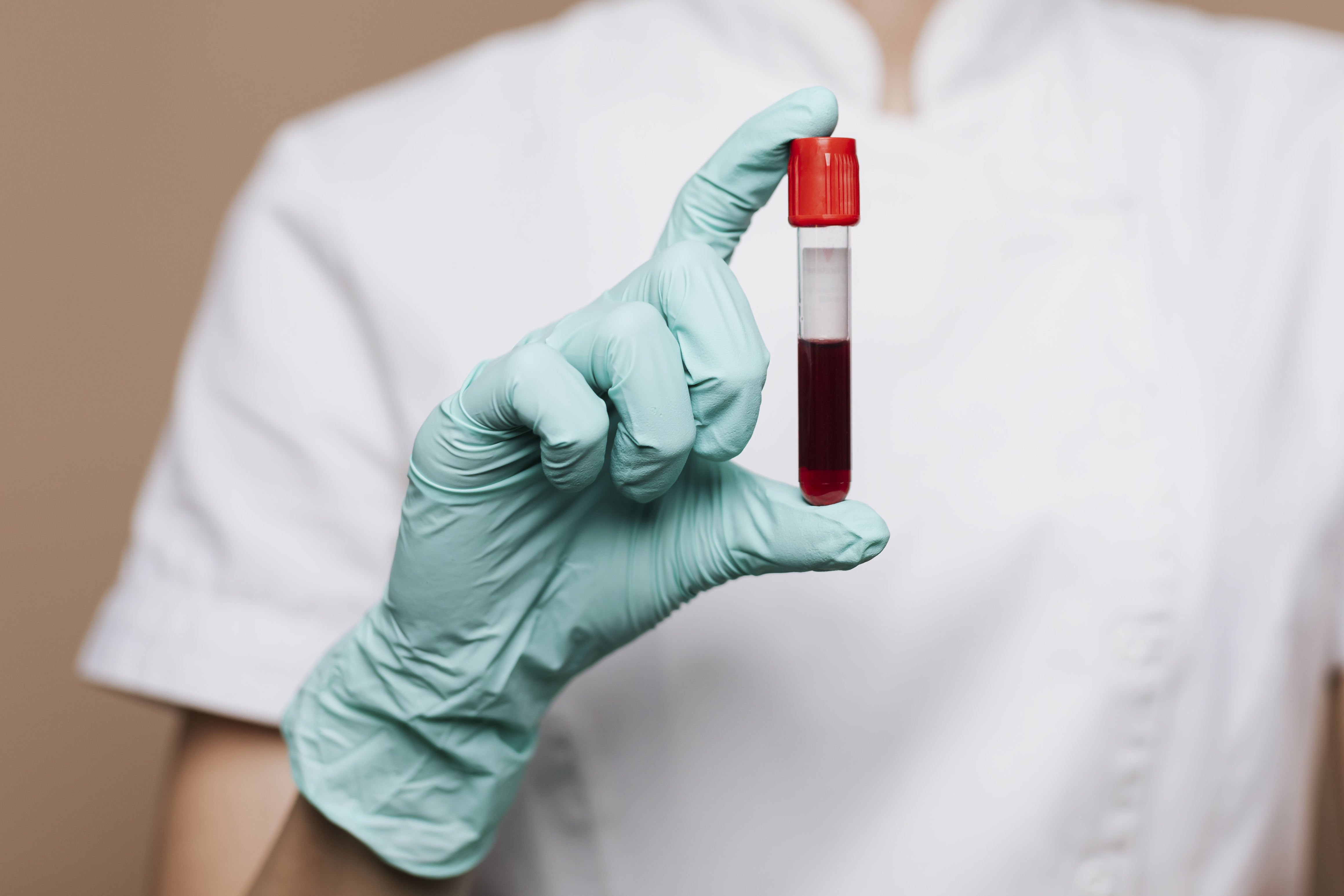Preventive Healthcare
Beta Thalassemia Test: Overview, Need, Procedure & Result
7529 Views
0

Beta Thalassemia is a genetic disorder and a subtype of Thalassemia in which there is reduced red blood cell count, decreased level of haemoglobin, and anaemia. The diagnosis of Beta Thalassemia is done through the Beta Thalassemia blood test which will be described in greater detail in this blog.
What is a Beta Thalassemia Test?
On suspicion of Beta Thalassemia, your doctor will advise you to undergo a Beta Thalassemia blood test through routine blood samples to confirm the diagnosis of Beta Thalassemia. A blood sample is used to conduct the following tests:
- Complete Blood Count(CBC)
A Complete Blood Count (CBC) is a quantitative measure of the number, size, shape, and analysis of different cells in the blood, along with haemoglobin analysis. A Beta Thalassemia blood smear (sample) will have fewer red blood cells of varying shapes and sizes. The amount of haemoglobin also reduces and is seen with a characteristic “bull’s eye” appearance on a microscopic view.
- Molecular Genetic Testing
Molecular genetic testing helps identify the different types of genes in an individual and the possible gene mutations which may lead to Beta Thalassemia. A gene named HBB is responsible for causing Beta Thalassemia in susceptible individuals. This test is available only in specialized laboratories to identify at-risk individuals for prevention and diagnosis of Beta Thalassemia.
- Haemoglobin Electrophoresis
A Hemoglobin electrophoresis test measures the different types of haemoglobin in your blood. It also helps to understand the severity of anaemia present in Beta Thalassemia.
Why Do You Need to Do a Beta Thalassemia Test?
The advantages and uses of undergoing a Beta Thalassemia test include
- A definite diagnosis is obtained.
- Treatment can be begun based on the type of Thalassemia.
- The effect of a treatment protocol can be assessed.
- Other causes with similar symptoms can be ruled out.
- The prognosis of Beta Thalassemia can be evaluated in the long run.
- Helps identify at-risk individuals like relatives, blood relations, and the growing fetus during pregnancy.
- To identify carriers of Beta Thalassemia genes. These individuals may not suffer from the disease but are carriers of it.
Beta Thalassemia Test Procedure
- Fasting is usually not required for a Beta Thalassemia test. You need to confirm with your doctor and lab technician for any further preparatory measures.
- A blood sample will be collected by a lab technician at your home or a laboratory.
- A sterile syringe will be used to draw blood from your arm or forearm veins.
- A small prick will be felt with minimal discomfort. You may be advised to press a cotton swab over the site to reduce the oozing of blood.
- Any signs of distress like dizziness, fainting, or weakness must be reported immediately.
- The Beta Thalassemia blood test sample will be sent to specialized laboratories to conduct tests like CBC, molecular genetic testing, and haemoglobin electrophoresis if required.
- Reports for a CBC are available within a day or two. Whereas, results of molecular genetic testing and haemoglobin electrophoresis will need time for analysis.
Beta Thalassemia Test Results
- Test results for a CBC through a Beta Thalassemia blood smear
| Sr. no | Red blood cell index | Male normal value | Female normal value | Values in Beta Thalassemia major | Values in Beta Thalassemia minor |
| 1. | Mean corpuscular volume (MCV fl) | 89.1±5.01 | 87.6±5.5 | 50-70 | <79 |
| 2. | Mean corpuscular haemoglobin (MCH pg) | 30.9±1.9 | 30.2±2.1 | 12-20 | <27 |
| 3. | Haemoglobin (Hb g/dL) | 15.9±1.0 | 14.0±0.9 | <7 | Males: 11.5-15.3 Females: 9.1-14 |
- Test Results for Molecular Genetic Testing
The HBB gene responsible for causing Beta Thalassemia will be reported as
- Gene mutations are present with the presence of the HBB gene.
- Gene mutations may be present or absent with the absence of the HBB gene.
- Haemoglobin Electrophoresis Test Results
Findings for the Hemoglobin electrophoresis test will reveal:
- The presence of elevated Hgb A2 and F haemoglobins with or without iron deficiency in Beta Thalassemia patients.
- Normal or reduced Hgb A2 and F in individuals with Alpha Thalassemia or simple iron deficiency anaemia.
Conclusion
A Beta Thalassemia test is done to identify, diagnose and evaluate the efficacy of treatment in individuals suffering from Beta Thalassemia. The test may also be conducted to identify potential carriers of the disease like a family relative or a pregnant mother. It is done through a Beta Thalassemia blood test. A blood sample will be drawn through your arm or forearm veins.
The blood sample will be sent to designated specialized laboratories to conduct tests like a Complete Blood Count, Molecular genetic testing, and haemoglobin electrophoresis. The results for a CBC are available within a day but may take a couple of days for the other two tests. You must consult your doctor with the test results for further treatment and rehabilitation.
FAQs
- What is the Treatment For Beta Thalassemia?
The treatment for Beta Thalassemia includes regular blood transfusions, Chelation therapy (medicines to reduce iron in the body), and removal of the spleen through surgery if required.
- What are Beta Thalassemia Symptoms?
The symptoms of Beta Thalassemia include jaundice, lethargy, weakness, ulcers on the leg, enlargement of the spleen and liver, pale appearance, and gallstones.
- Which Foods to Avoid in Beta Thalassemia?
Individuals with Beta Thalassemia should avoid foods rich in iron like meat, fish, spinach, orange juice, and cereals.
 Home Visit
Home Visit Upload
Upload














1701259759.webp)









 WhatsApp
WhatsApp